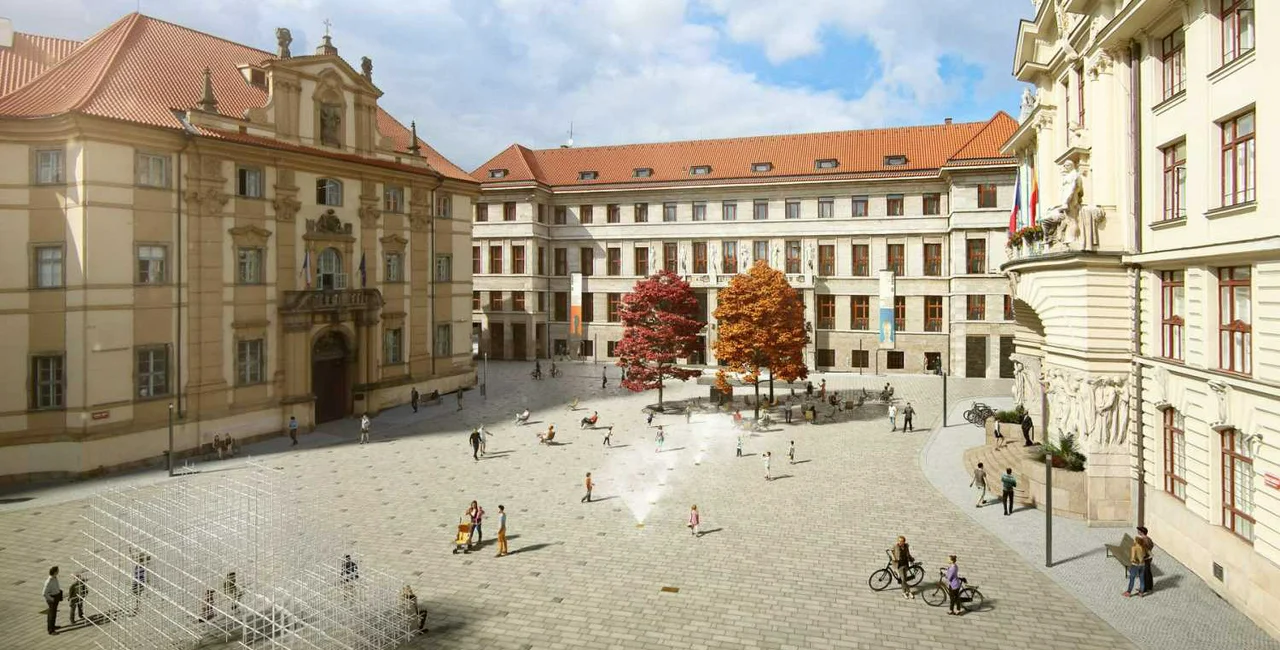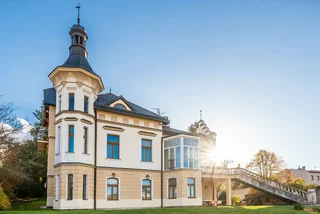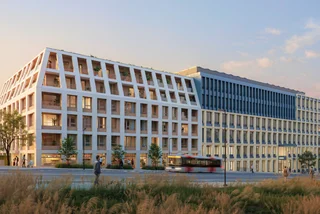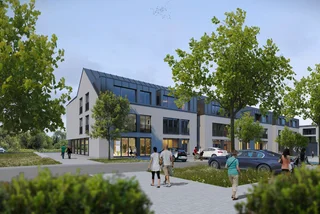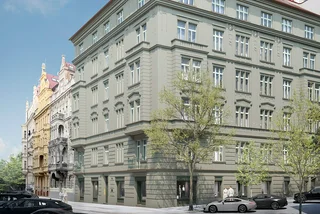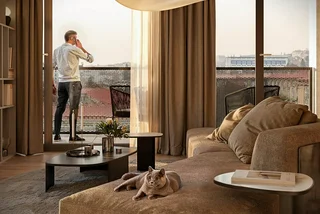The square in front of Prague’s City Hall will be changing into something more user-friendly, with new trees, benches and water elements. Renovation of Mariánské náměstí should begin in 2022.
Architectural studio Xtopix presented a new look for Mariánské náměstí, created with participation of citizens who want the square to become a place of rest and a zone for cultural events. Xtopix won a competition held by Prague Institute of Planning and Development (IPR Praha) last year to draft the plan for the square.
Seznamte se s novou podobou Mariánského náměstí a jeho okolí! Promění se do ní už v následujících třech letech, když vše půjde podle plánu. Přibudou nové stromy, ale i vodní prvky jako kašna, pítka a mlžítka. Děkuji @Hlavacek_P a @iprpraha za skvělou práci! ? pic.twitter.com/HzGMh6XsLZ
— Zdeněk Hřib (@ZdenekHrib) September 9, 2020
“I am pleased that the square in front of the Prague City Hall will finally take on a representative form where people can relax from the busy center. I see the planting of new greenery — specifically three maples — as a very important part of the new look of Mariánské náměstí. Maples tolerate the drought and the harsh conditions we have in the city center well, and I’m really looking forward to sitting under them,” Prague Mayor Zdeněk Hřib (Pirates) said.
The square will become a pedestrian zone with newly planted maples, benches, tables and also water features. There will be a a decorative and drinking fountains and water jets, which will refresh visitors in the summer and will also serve as a playful element for children.
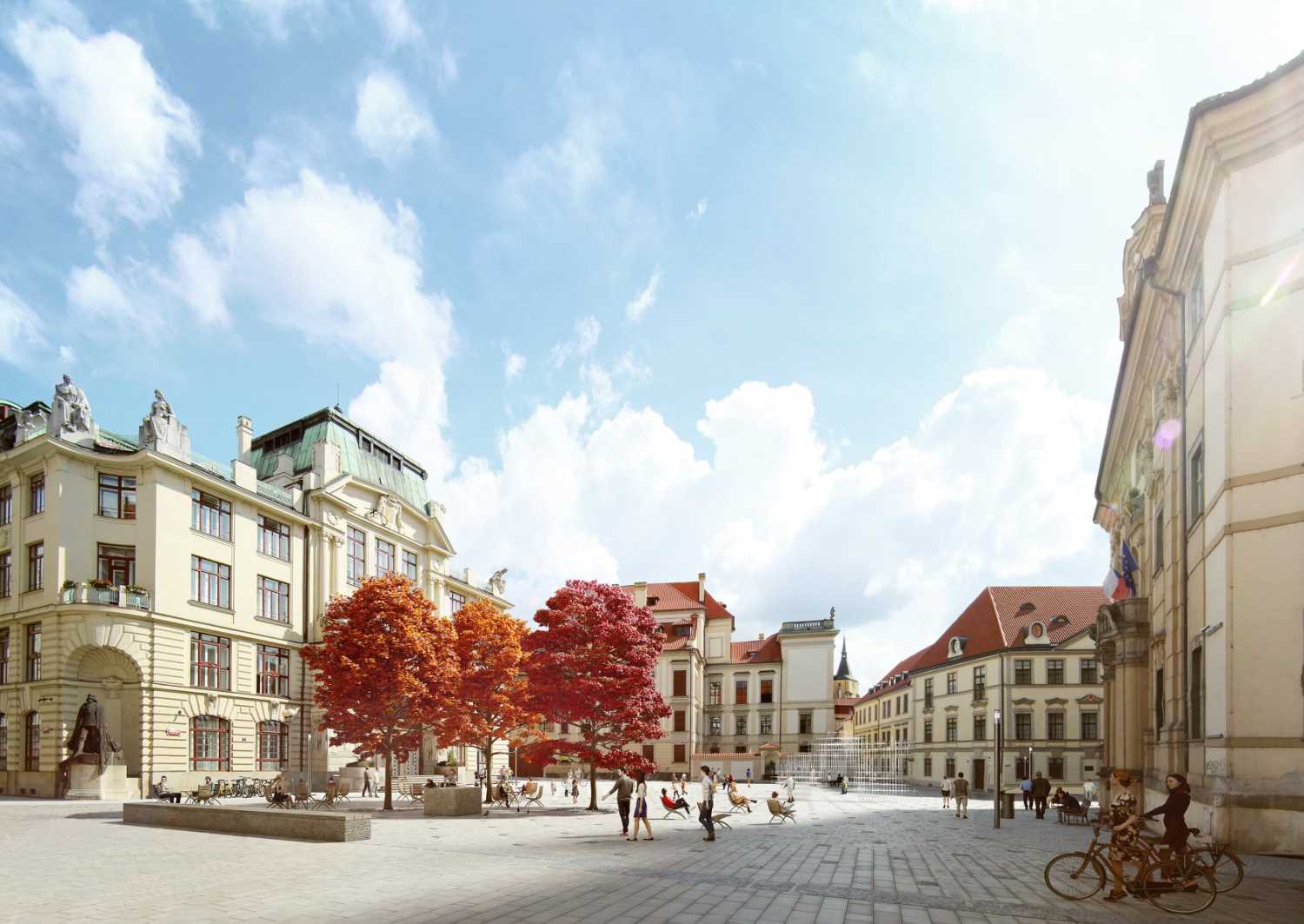
The southern part of the square will provide a flexible space for organizing various cultural events, which will be directed by the Municipal Library. The cultural program will focus on theater performances, concerts, public readings and markets.
“I appreciate that a multidisciplinary team of architects, traffic engineers, water managers and landscape architects worked on the transformation of the square. The square meets not only aesthetic qualities, but also functional ones. The design also thinks of the microclimate in the city, where it cannot be improved by locating mature vegetation,” Prague Deputy Petr Hlaváček (United Force for Prague), responsible for territorial development, said.
“The square is an archaeological site and it is unrealistic to place more trees here. That is why the cooling of the space will be solved with the help of water, by placing a fountain and a mist,” he added.
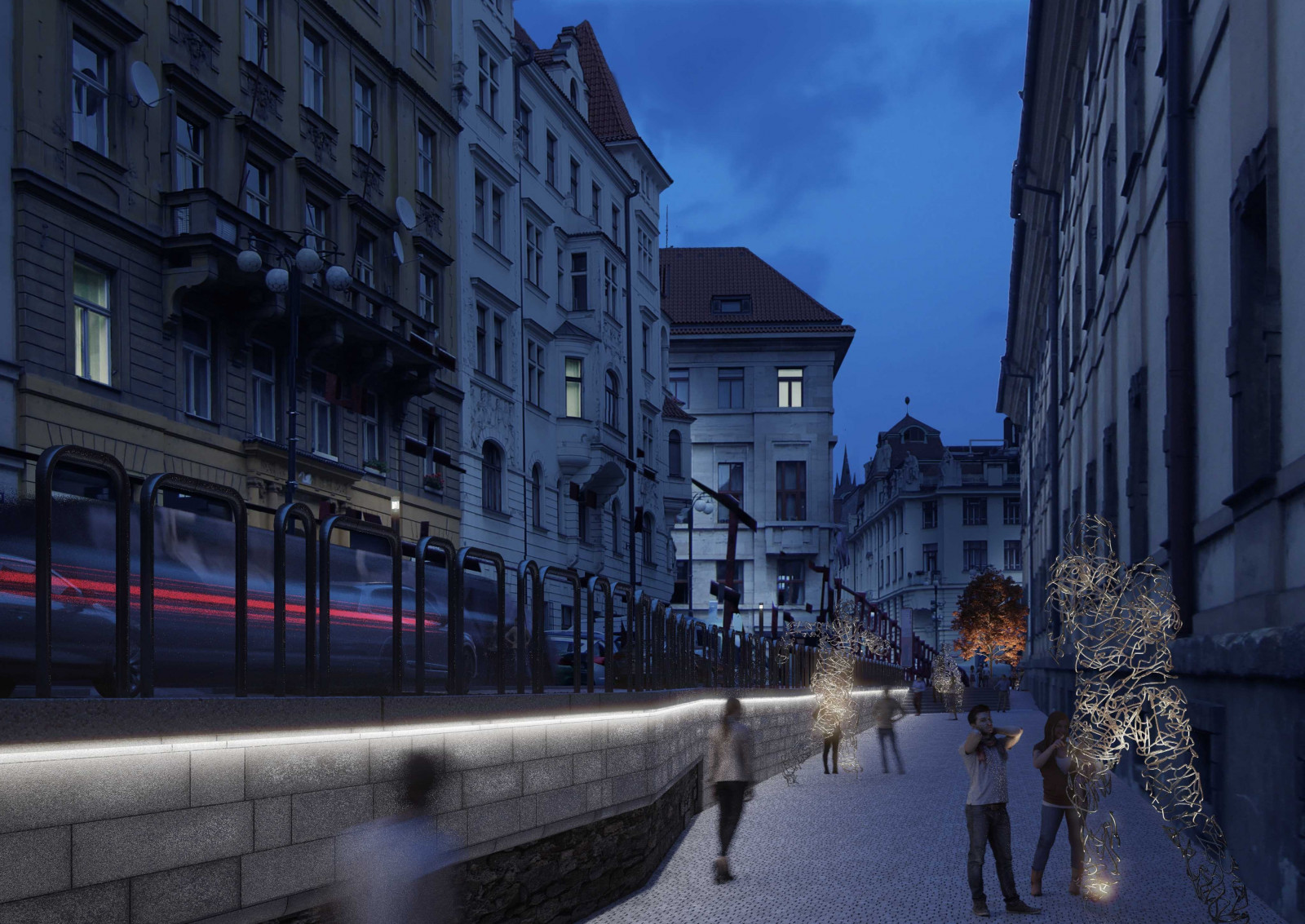
As part of the new design, the adjacent surroundings — Platnéřská Street, náměstí Franze Kafky. and Kaprovy Street — will also be modified. In Platnéřská Street, the sunken area will be widened along the Klementinum building to create a wide sidewalk that will also be used as an outdoor exhibition space by the Municipal Gallery. A new tree line will be planted in Kaprova Street.
Traffic changes are also planned. The square will be used mainly for pedestrians and cyclists, but will also allow necessary passage for cars and service vehicles. The proposal envisages the widening of sidewalks and the creation of pedestrian zones. More crossings will also be provided.
“The new design of Mariánské náměstí responds to the calming of the city center, but also respects the necessary service of the area. The proposal changes the traffic use of the western part of Platnéřská Street so that Mariánské náměstí remains unaffected from both transit directions. At the same time, however, it retains the possibility of serving institutions in the square,” Prague Deputy Mayor Adam Scheinherr (Praha sobě), responsible for transport, said.
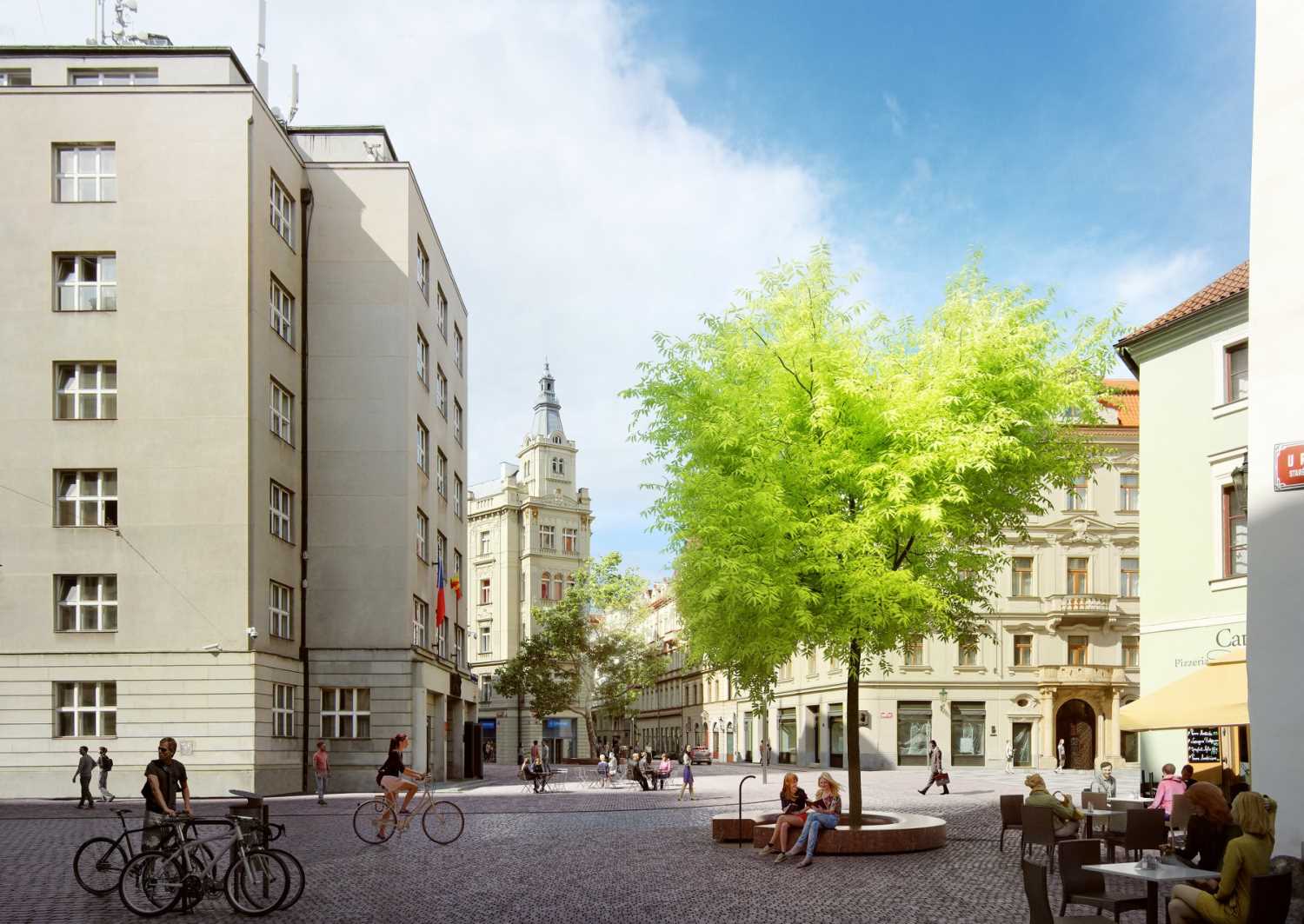
The new appearance of the square also respects the history of this place. Mariánské náměstí has changed significantly over the centuries. The architects marked the line of the late 19th century development of the square with the help of the bench locations, paving design and the water elements. The Josefov area and its surroundings underwent a large planned renovation called the Pražská asanace at the end of the 19th and start of the 20th century.
“The new proposal for what the square should look like in the future is based on the needs and wishes of citizens, for which I am very happy, and I hope that it will become a pleasant place for citizens to meet and hold various events,” Prague 1 Mayor Petr Hejma (STAN) said.
The square’s new design is based on the participation with citizens and local institutions that took place last year. “We always try to involve citizens and local institutions in urban planning, as the newly created places will serve them. The survey last year showed that Mariánské náměstí should have a local character and not become the second Old Town Square. On the contrary, it should also function for neighborhood meetings and smaller cultural events,” IPR Praha director Ondřej Boháč said.
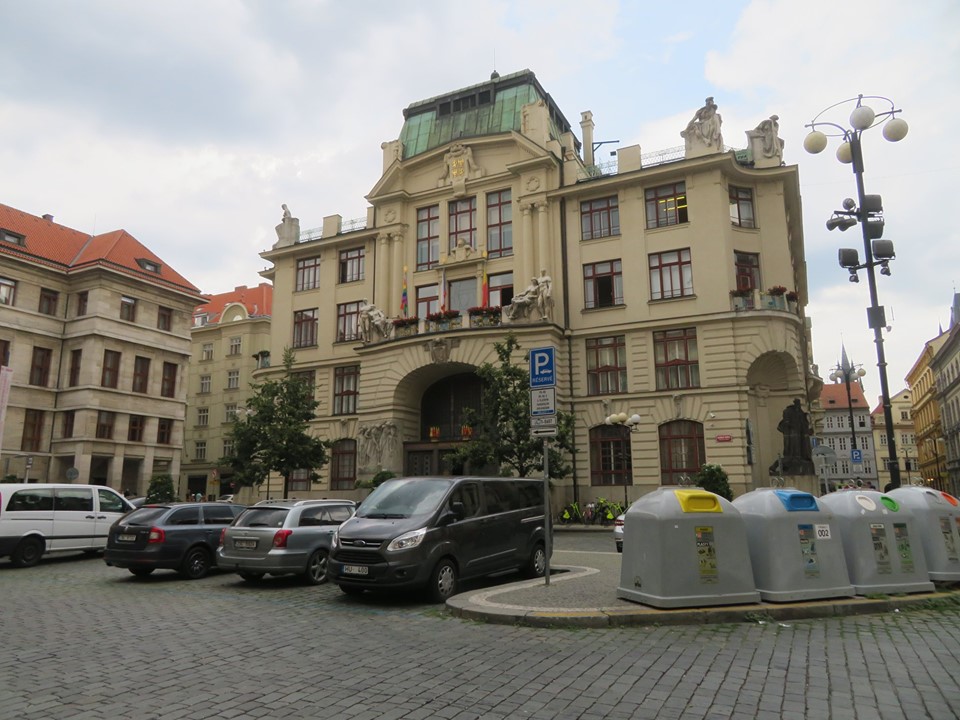
Mariánské náměstí was a parking lot until September 2019, when it was turned into a pedestrian zone with temporary furniture, but it still has the original paving and traffic islands. The complete transformation was announced at that time.
The square was originally a settlement called Na Louži with the Church of the Virgin Mary and a courtyard already around the middle of the 12th century. The square was named after the church, but went through several variations such as Ryneček u Matky Boží na Louži, Plac Matky Boží and Mariánský plácek. From 1952 to 1990 is was called náměstí Primátora dr. V. Vacka, after a former mayor.
The church was demolished around 1791 due to religious reforms under Emperor Joseph II. Fragments of some its stonework can be seen in the Lapidarium.
The New City Hall (Nová radnice) was built in 1908–11, after a design by architect Osvald Polívka. It has a facade in the Art Nouveau style with sculptures by noted artists Stanislav Sucharda, Josef Mařatka and Ladislav Šaloun,
Several other Prague’s squares including Wenceslas Square, Karlovo náměstí, náměstí Jiřího z Poděbrad and Malostranské náměstí are in various stages of renovation.
There is no word yet on whether the QR code in front of City Hall will survive the renovations. Currently it redirects to a practical joke.












 Reading time: 5 minutes
Reading time: 5 minutes 